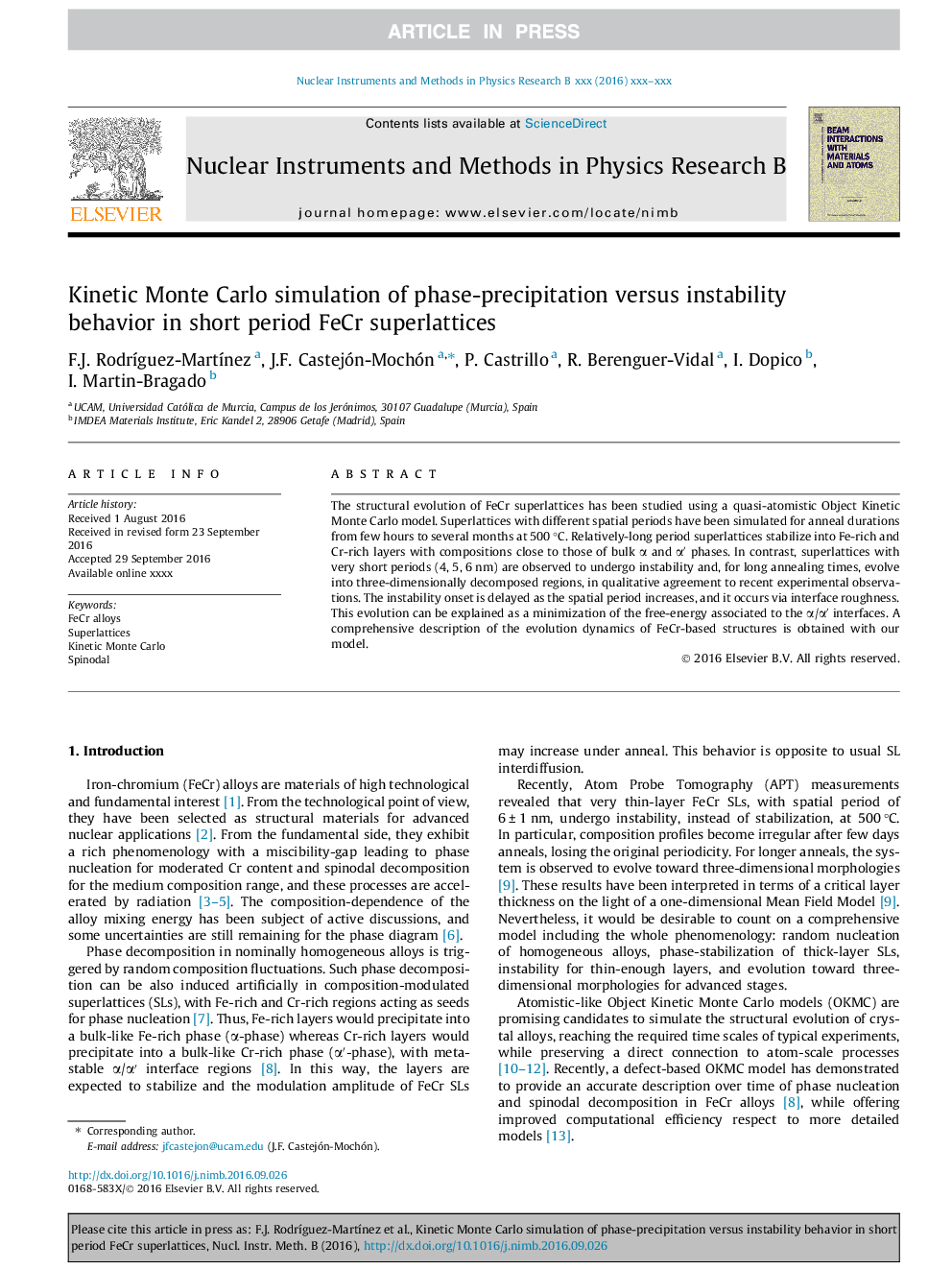| Article ID | Journal | Published Year | Pages | File Type |
|---|---|---|---|---|
| 5467680 | Nuclear Instruments and Methods in Physics Research Section B: Beam Interactions with Materials and Atoms | 2017 | 5 Pages |
Abstract
The structural evolution of FeCr superlattices has been studied using a quasi-atomistic Object Kinetic Monte Carlo model. Superlattices with different spatial periods have been simulated for anneal durations from few hours to several months at 500 °C. Relatively-long period superlattices stabilize into Fe-rich and Cr-rich layers with compositions close to those of bulk α and αⲠphases. In contrast, superlattices with very short periods (4, 5, 6 nm) are observed to undergo instability and, for long annealing times, evolve into three-dimensionally decomposed regions, in qualitative agreement to recent experimental observations. The instability onset is delayed as the spatial period increases, and it occurs via interface roughness. This evolution can be explained as a minimization of the free-energy associated to the α/αⲠinterfaces. A comprehensive description of the evolution dynamics of FeCr-based structures is obtained with our model.
Related Topics
Physical Sciences and Engineering
Materials Science
Surfaces, Coatings and Films
Authors
F.J. RodrÃguez-MartÃnez, J.F. Castejón-Mochón, P. Castrillo, R. Berenguer-Vidal, I. Dopico, I. Martin-Bragado,
